I'm working on a dual headphone amplifier. I've discovered that it has a pretty bad turn-on transient that results in a loud pop if headphones are plugged into the amplifier when it is turned on. The split positive and negative rails rise very quickly at slightly different times due to the mechanical action of the DPDT latching switch, S1.
What is the best way to handle this? I figure something that could get V+ and V- to ramp up slowly and evenly at turn-on would solve the problem. Is there an elegant way to accomplish this?
Here is the schematic. BT1 and BT2 are 9V batteries.

original circuit link here